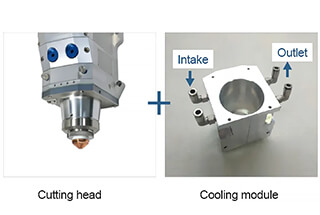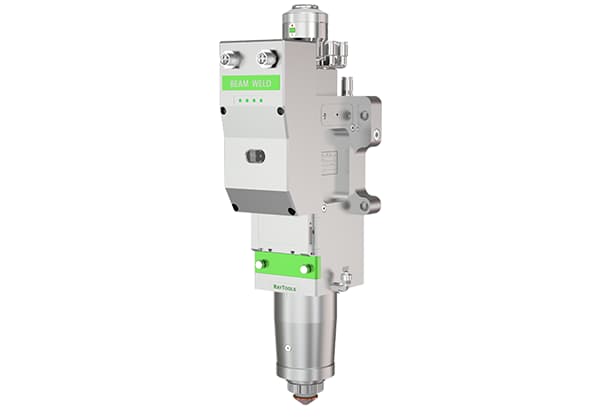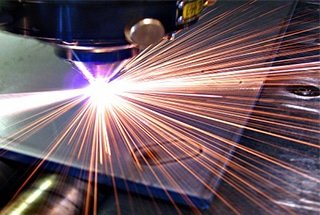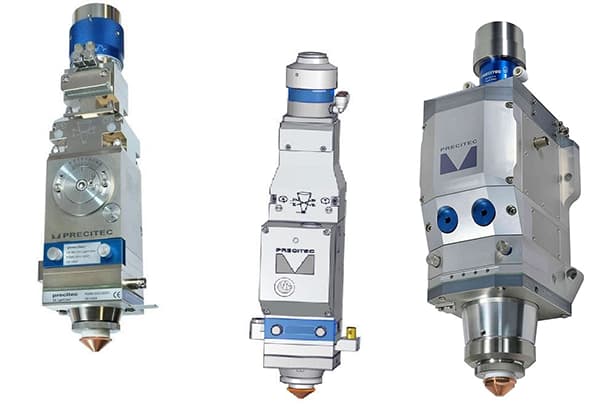
Have you ever noticed black spots on your laser cutting or welding lens? These blemishes can severely disrupt operations, affecting the quality and precision of your work. In this article, we delve into the common causes of these black spots, from slag adhesion to improper focus settings. You’ll also learn practical solutions and preventative measures to maintain your equipment in top condition, ensuring optimal performance and longevity. Dive in to understand how to keep your laser systems spotless and efficient.
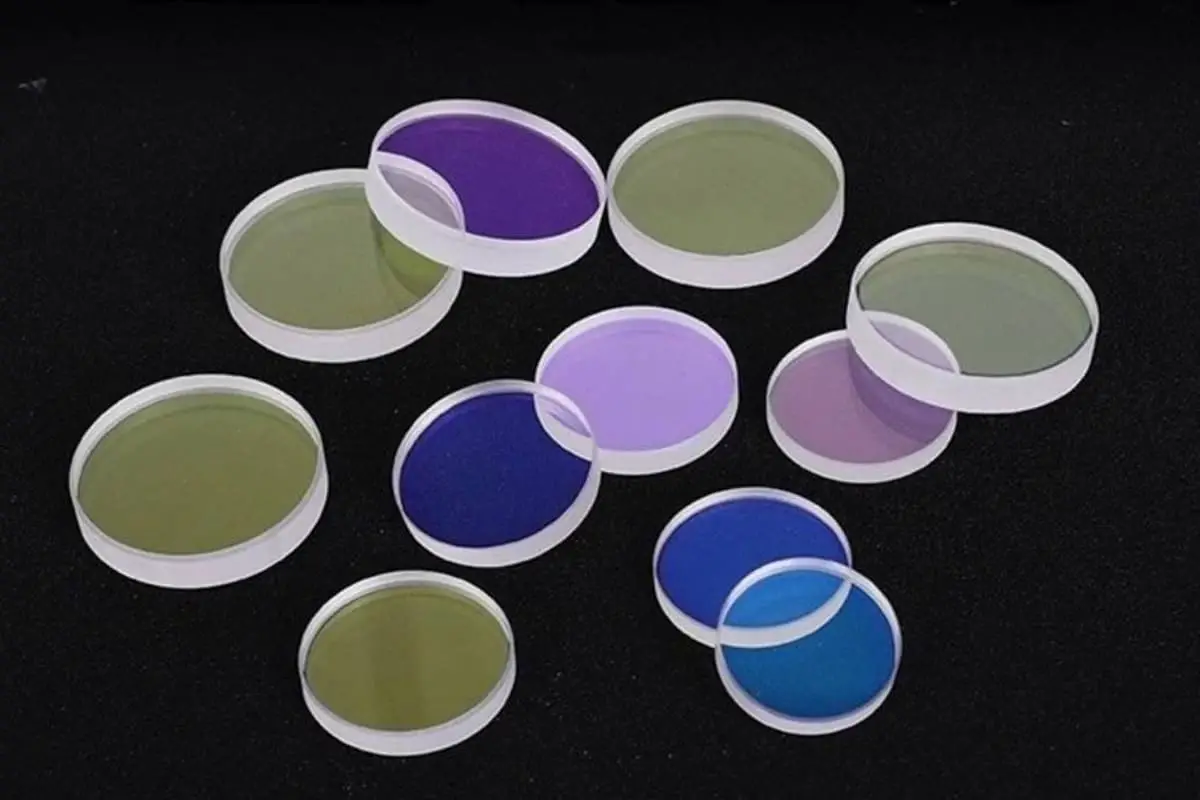
The laser cutting head lens is one of the precision components of a laser cutting head, forming an integral part of the laser cutting head’s optical system. The installation and condition of the laser cutting head lens significantly impact the quality of laser cutting. Therefore, we must pay attention to this component.

Black spots on the laser cutting head lens often result from slag splashing and adhering to the quartz lens during the piercing and cutting process.
Black spots on the laser cutting head lens can hinder normal cutting operations. This is because the black spots continuously grow during the laser emission process, gradually eroding the protective lens. This eventually leads to focal point drift due to the thermal lens effect from overheating at the center of the lens. Essentially, this reduces the focal length, preventing normal cutting.
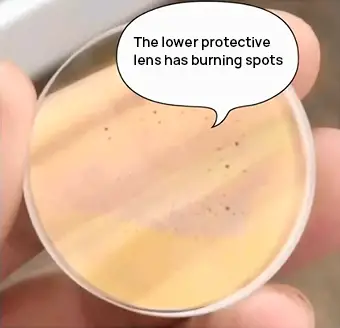
Reason 1: Excessive negative focus during piercing, leading to piercing slag returning to the lens of the laser cutting machine.
Solution: Raise the piercing focus.
Reason 2: Unsuitable piercing energy, piercing time too close to the limit, or explosive piercing.
Solution: Lower the duty cycle, increase piercing time.
Reason 3: Co-edge layout cutting of parts, deformation of sheet metal causing difficulty in connecting cuts.
Solution: Add piercing at the co-edge cutting position, or increase micro-connections in the layout of parts.
Reason 4: Metallic particle contamination in the airway pipeline.
Solution: Clean or replace the pipeline, identify and replace the source of the metal dust (e.g., pipe joint connections).
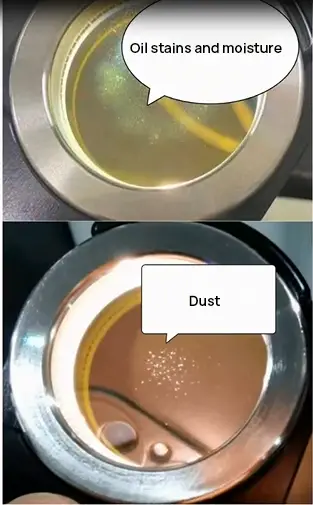
Reason 1: The air compressor’s filter does not meet usage standards.
Solution: Check if the air compressor’s filter core is ineffective or upgrade the filter level.
Reason 2: The airway pipeline is dirty.
Solution: Disconnect the air inlet pipe of the cutting head, flush the machine tool’s air inlet with high-purity alcohol under atmospheric pressure, clean the pipeline 3-4 times, or replace the airway pipeline.
Reason 3: The air inlet seat filter of the fiber laser cutting machine is blocked by raw materials or other foreign objects.
Solution: Dismantle the air inlet seat, check if the air inlet seat filter is blocked by any foreign objects.
The focusing lens of the optical fiber laser cutting machine, located at the cutting head, is quite expensive. Therefore, a protective lens is designed to safeguard it. Consequently, the replacement of the protective lens is routine. However, if the replacement frequency accelerates, it is necessary to identify the problem.
Black spots often occur due to the adhesion of molten slag splashed during the piercing and cutting processes onto the quartz lens. Because these black spots continuously grow and erode the protective lens during the light emission process, the center of the lens might experience focal drift due to the thermal lens effect of overheating expansion. This actually reduces the focal length, making cutting impossible, and cleaning these black spots is quite challenging.
There are two types of lenses in the laser cutting head: the focusing lens and the protective lens. Their primary function is to concentrate the laser beam; hence, it is essential to keep these lenses clean and translucent.
When black spots appear, what should we do?
The lens of the laser cutting head is the core and needs good protection to effectively utilize the performance of the laser cutting head.
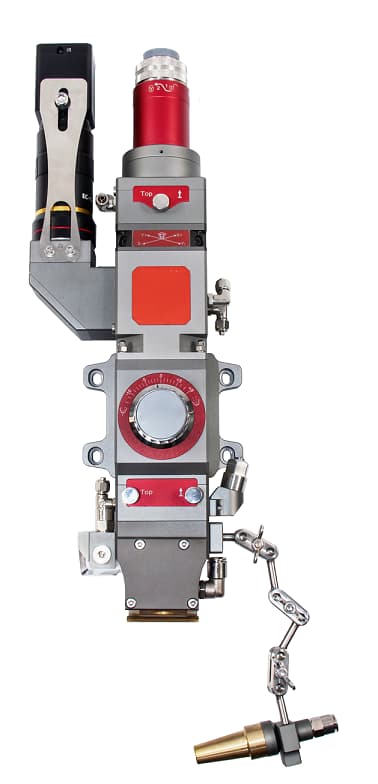
How to handle black spots on laser welding head lenses?
Cleaning these black spots can pose a challenge, primarily due to the following reasons:
What to do if there are black spots on the lens of the laser cutting and welding head?
Since it’s difficult to deal with black spots on the lens of the laser cutting head, a direct replacement of the lens is recommended. To prevent black spots from appearing on the lens of the laser cutting head, it’s crucial to take preventative measures.
Finally, how should one choose the lens for the laser cutting head?

